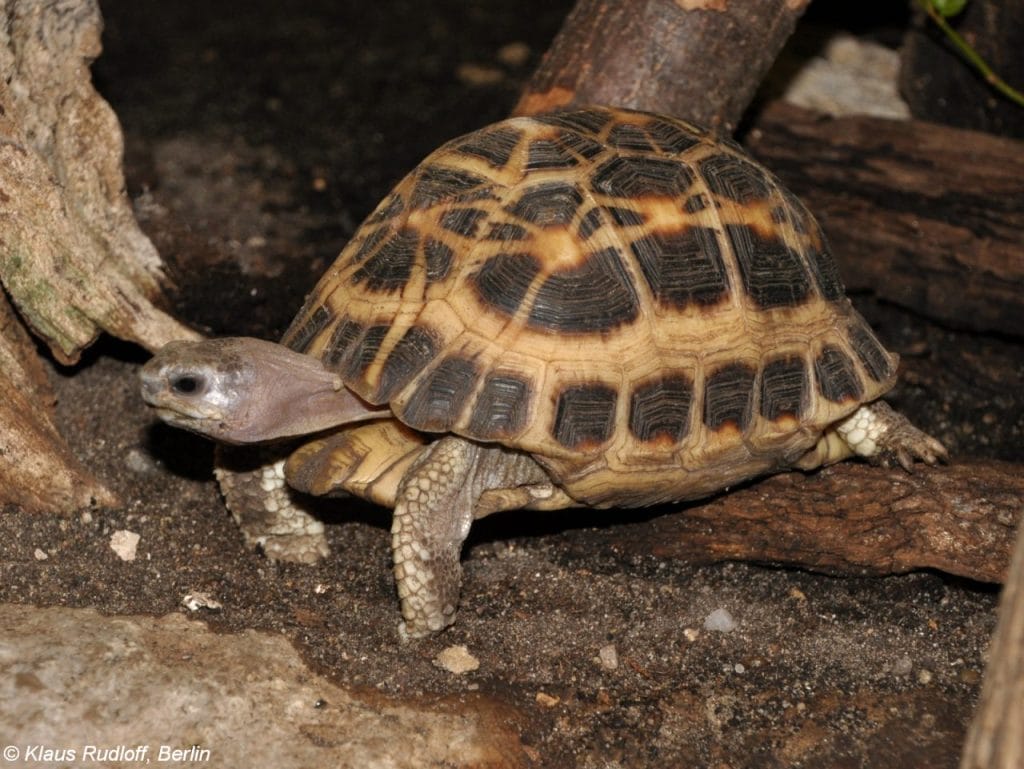Pyxis arachnoides (Common Spider Tortoise)
Home > Turtle Database > Pyxis arachnoides (Common Spider Tortoise)

Pyxis arachnoides, or the common spider tortoise, is a small and striking tortoise species native to Madagascar. It gets its name from the web-like pattern on its shell, which looks like a spider’s web. This tortoise is critically endangered and found only in limited areas of dry forest.
Native To These Regions
MadagascarNative Turtle Species Map – Find Turtles by Region
Scientific Classification
Kingdom: Animalia
Phylum: Chordata
Class: Reptilia
Order: Testudines
Family: Testudinidae
Genus: Pyxis
Species: Pyxis arachnoides
Common Names
Common Spider Tortoise
Spider Tortoise
This Hilarious Turtle Book Might Know Your Pet Better Than You Do
Let’s be real—most turtle care guides feel like reading a textbook written by a sleep-deprived zookeeper.
This one’s not that.
Told from the snarky point of view of a grumpy, judgmental turtle, 21 Turtle Truths You’ll Never Read in a Care Guide is packed with sarcasm, sass, and surprisingly useful insights.
And hey—you don’t have to commit to the whole thing just yet.
Grab 2 free truths from the ebook and get a taste of what your turtle really thinks about your setup, your food choices, and that weird plastic palm tree.
It’s funny, it’s honest, and if you’ve ever owned a turtle who glares at you like you’re the problem—you’ll feel seen.
Identification
Description
The shell is dome-shaped and dark with yellowish lines that form a web-like pattern. Adults are small, usually around 4 to 6 inches long. The limbs are short and thick, and the head is small with a slightly pointed snout.
Sexual Dimorphism
Males tend to have longer tails and a more concave plastron (bottom shell) than females. Females are usually a bit rounder and heavier.
Check more turtles from the Pyxis genus
Native Origin and Distribution
Geographical Range
This species is found only in the southwestern coastal areas of Madagascar. It is one of the most range-restricted tortoises in the world.
Preferred Habitat
Spider tortoises live in dry spiny forests with sandy soil. They depend heavily on the thick underbrush and leaf litter for shelter and food. They are often inactive during the dry season.
Behavior
Feeding Habits
They feed mostly on fallen leaves, flowers, fruits, and fungi. Their diet changes based on what’s available during the wet season.
Predators
Predators include birds of prey, rats, dogs, and sometimes humans. Eggs and hatchlings are especially vulnerable.
Reproduction
Breeding Season
Breeding usually begins with the start of the rainy season, from November to March.
Reproductive Method
Females lay just one egg per clutch, often burying it in sandy soil. This slow rate of reproduction makes the species more vulnerable to extinction.
Conservation
Extinction Status
Critically Endangered (IUCN Red List)
Threats
Major threats include habitat destruction, illegal pet trade, and local hunting. Fires and livestock grazing also damage their environment.
Conservation Measures
There are several captive breeding programs and legal protections in place. Conservation groups are also working to protect their natural habitat and stop illegal trade.
Economic Importance
Spider tortoises have little economic value in traditional uses but are illegally sold in the exotic pet market, which puts pressure on wild populations.
Interesting Facts
Spider tortoises spend most of their life hidden and inactive.
They can go months without food during the dry season.
Their beautiful shell makes them a high target in the black market, despite legal protection.

About Author
Muntaseer Rahman started keeping pet turtles back in 2013. He also owns the largest Turtle & Tortoise Facebook community in Bangladesh. These days he is mostly active on Facebook.












